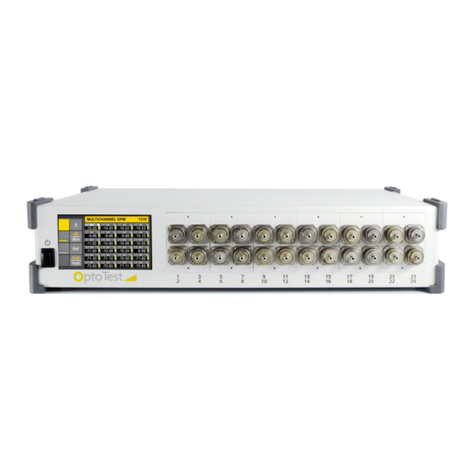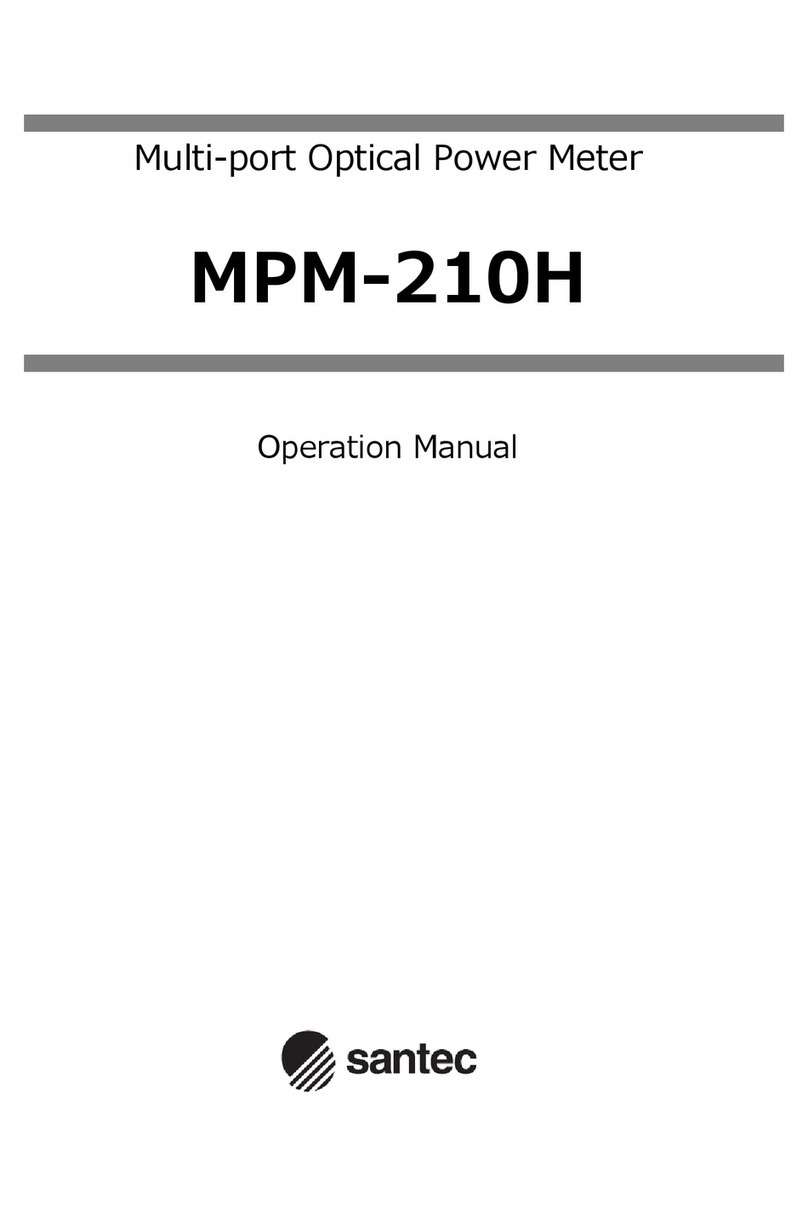Santec PEM-320 User manual
Other Santec Measuring Instrument manuals

Santec
Santec TSL-570 User manual
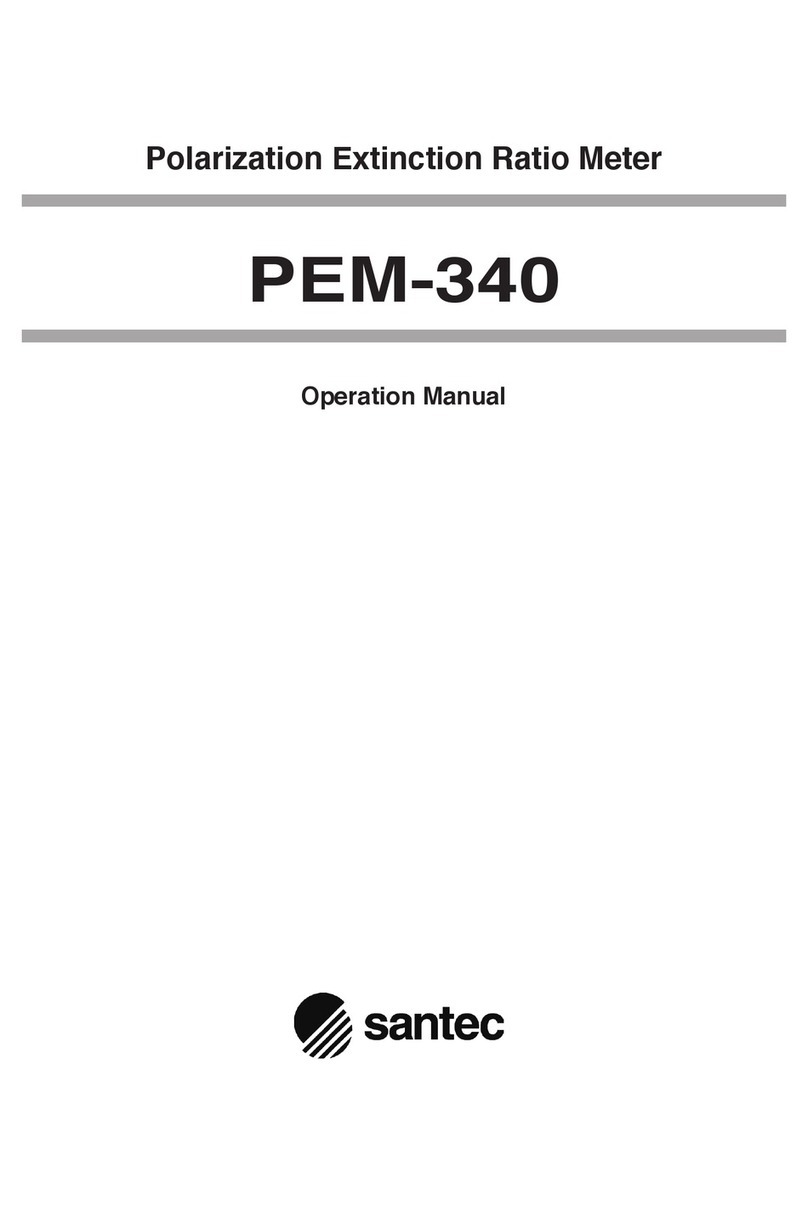
Santec
Santec PEM-340 User manual
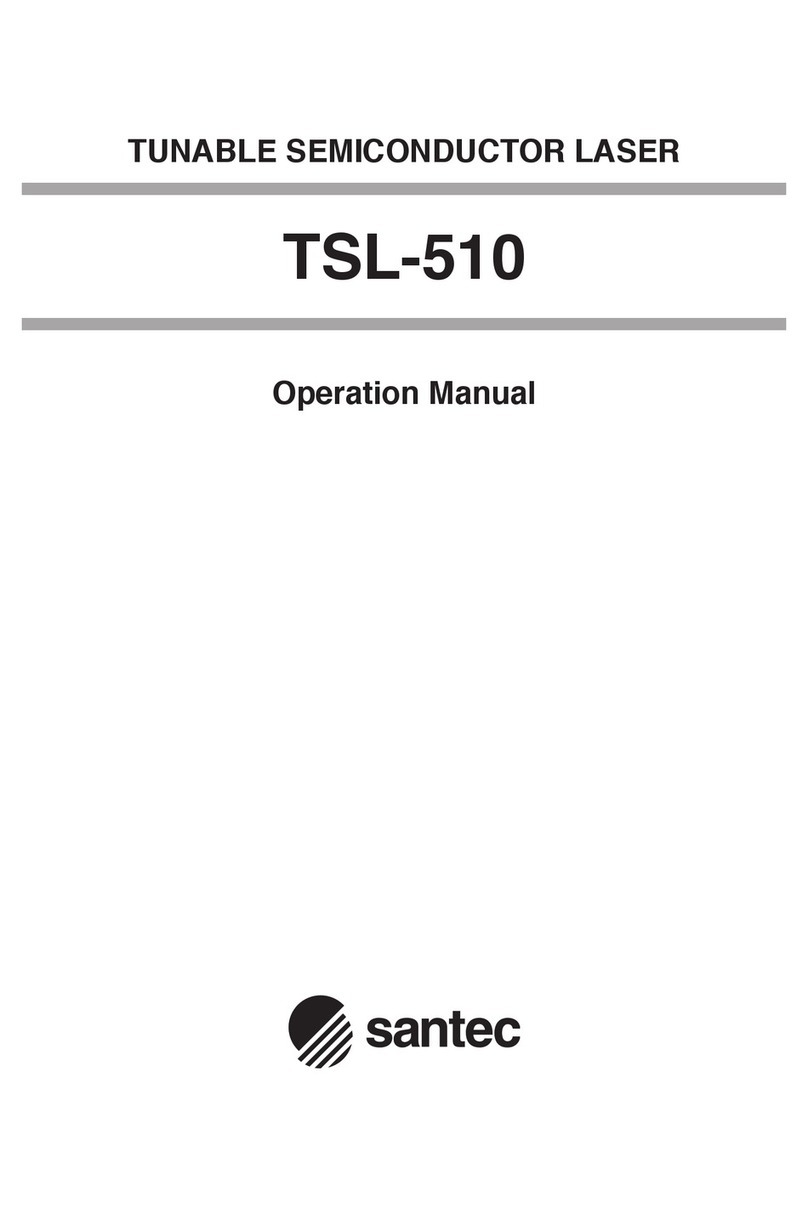
Santec
Santec TSL-510 User manual
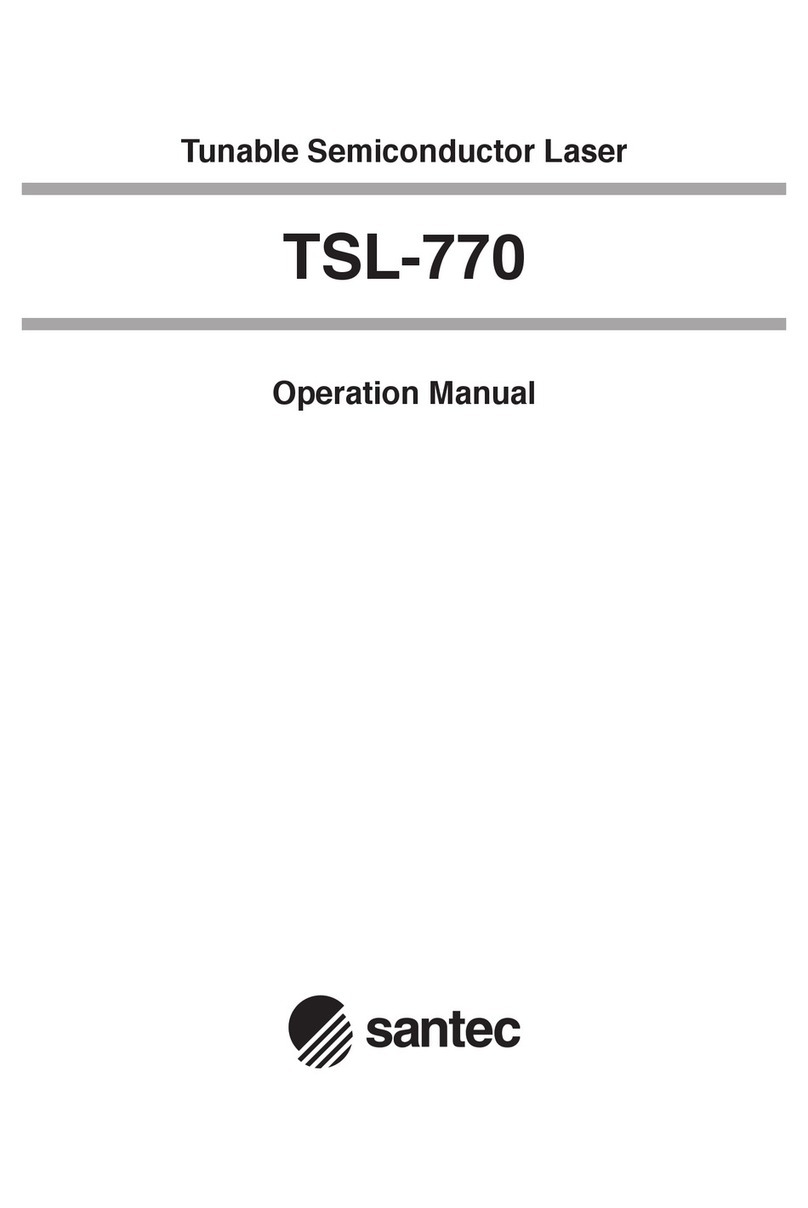
Santec
Santec TSL-770 User manual
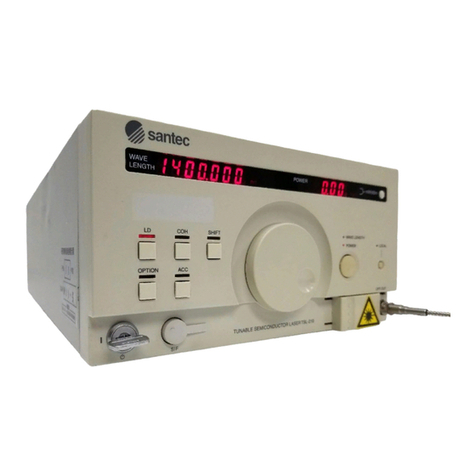
Santec
Santec TSL Series User manual

Santec
Santec TSL-550 User manual

Santec
Santec ECL-210 User manual
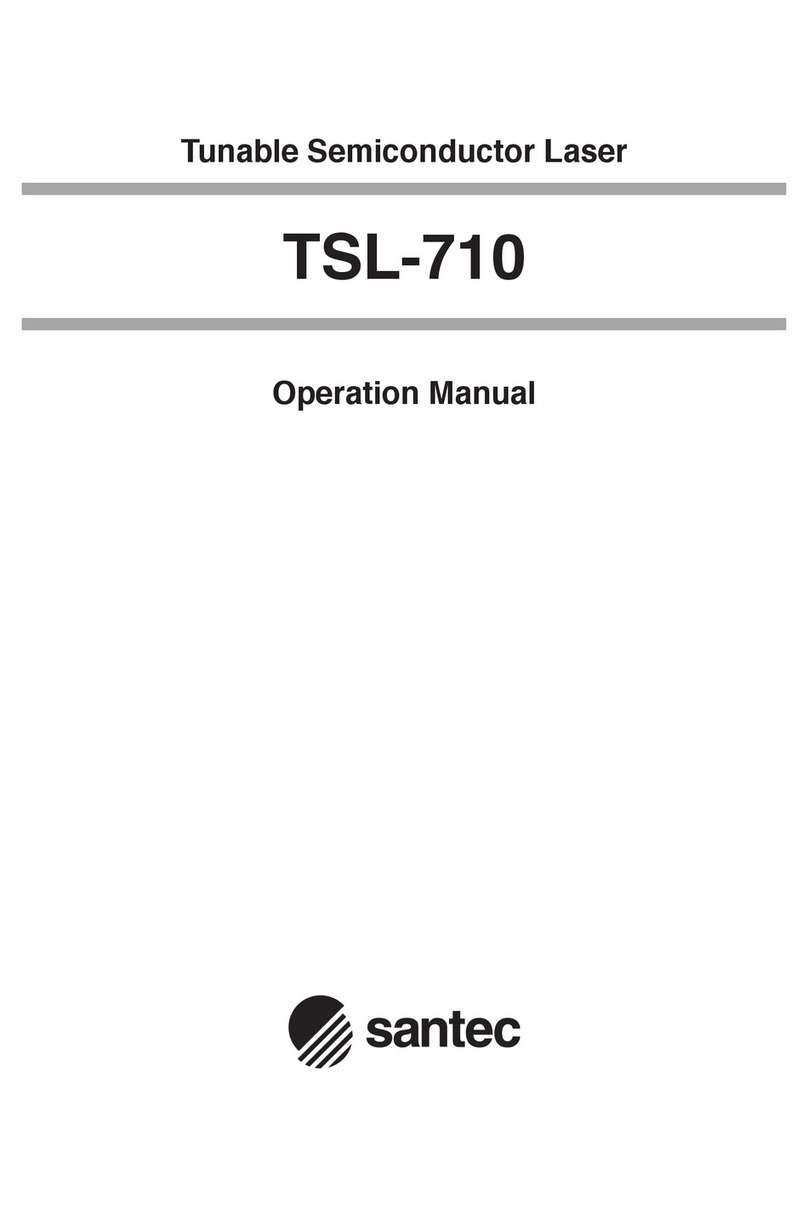
Santec
Santec TSL-710 User manual

Santec
Santec MPM-210 User manual

Santec
Santec PLS-100 User manual
Popular Measuring Instrument manuals by other brands

Powerfix Profi
Powerfix Profi 278296 Operation and safety notes

Test Equipment Depot
Test Equipment Depot GVT-427B user manual

Fieldpiece
Fieldpiece ACH Operator's manual

FLYSURFER
FLYSURFER VIRON3 user manual

GMW
GMW TG uni 1 operating manual

Downeaster
Downeaster Wind & Weather Medallion Series instruction manual

Hanna Instruments
Hanna Instruments HI96725C instruction manual

Nokeval
Nokeval KMR260 quick guide

HOKUYO AUTOMATIC
HOKUYO AUTOMATIC UBG-05LN instruction manual

Fluke
Fluke 96000 Series Operator's manual

Test Products International
Test Products International SP565 user manual

General Sleep
General Sleep Zmachine Insight+ DT-200 Service manual
